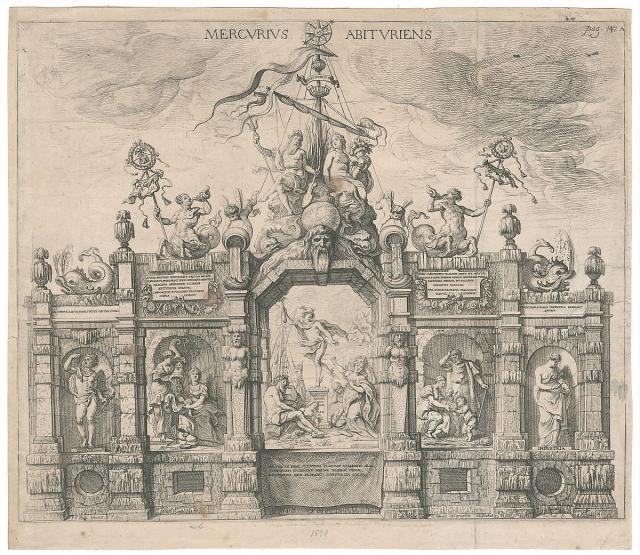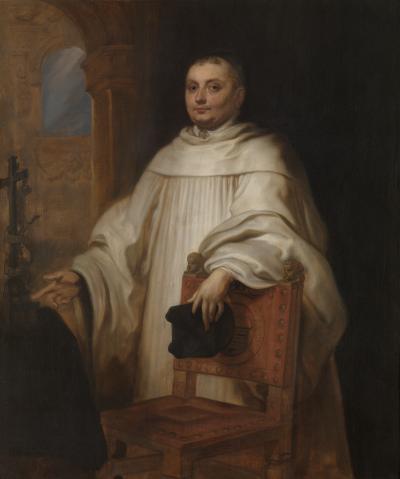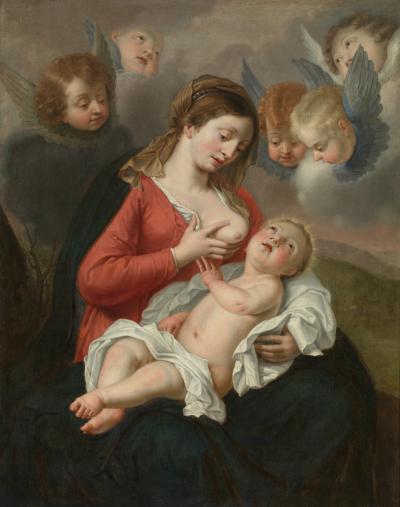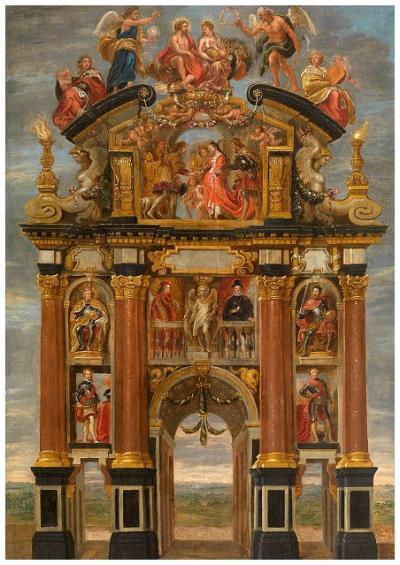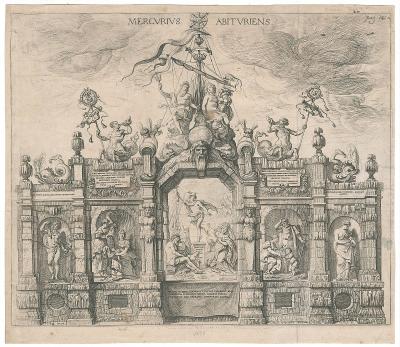This triumphal arch stood in the Hoogstraat and had to remind the Cardinal-Infant Ferdinand of the economic decay Antwerp experienced in the Southern Low Countries because of the closure of the River Scheldt, the access route to the North Sea. The Northern Low Countries closed off the Scheldt estuary in 1574 and levied a high toll on all goods going to and from Antwerp by ship, so that trade became difficult. In fact it was to take until 1863 before the Scheldt was actually opened up and the port of Antwerp could flourish again. In the Stage of Mercury Rubens showed how the city’s trade and boom suffered from the continuing war between the Spanish (Southern) Low Countries and the Republic of the United (Northern) Netherlands. In the central scene we see Mercury leaving Antwerp. On the left a scene with Abundance and Wealth, and on the far left Comus, the god of festivity, which refers to the good days. On the right of the central painting we see Poverty and on the far right Industria, the daughter of Poverty. Yet the latter figure represented the hope of the Antwerp people who, in spite of the closure of the Scheldt and therefore cessation of normal trade, concentrated on the production of textile and luxury products.
Mercurius Abituriens
Artist
Theodoor van Thulden
(engraver)
Peter Paul Rubens
(designer)
Production date
1635 – 1641
Collection
Object number
PK.OP.19509
Dimensions
514 mm x 448 mm
Keywords
CC BY (Creative Commons 4.0)
Other artworks of this artist
×

